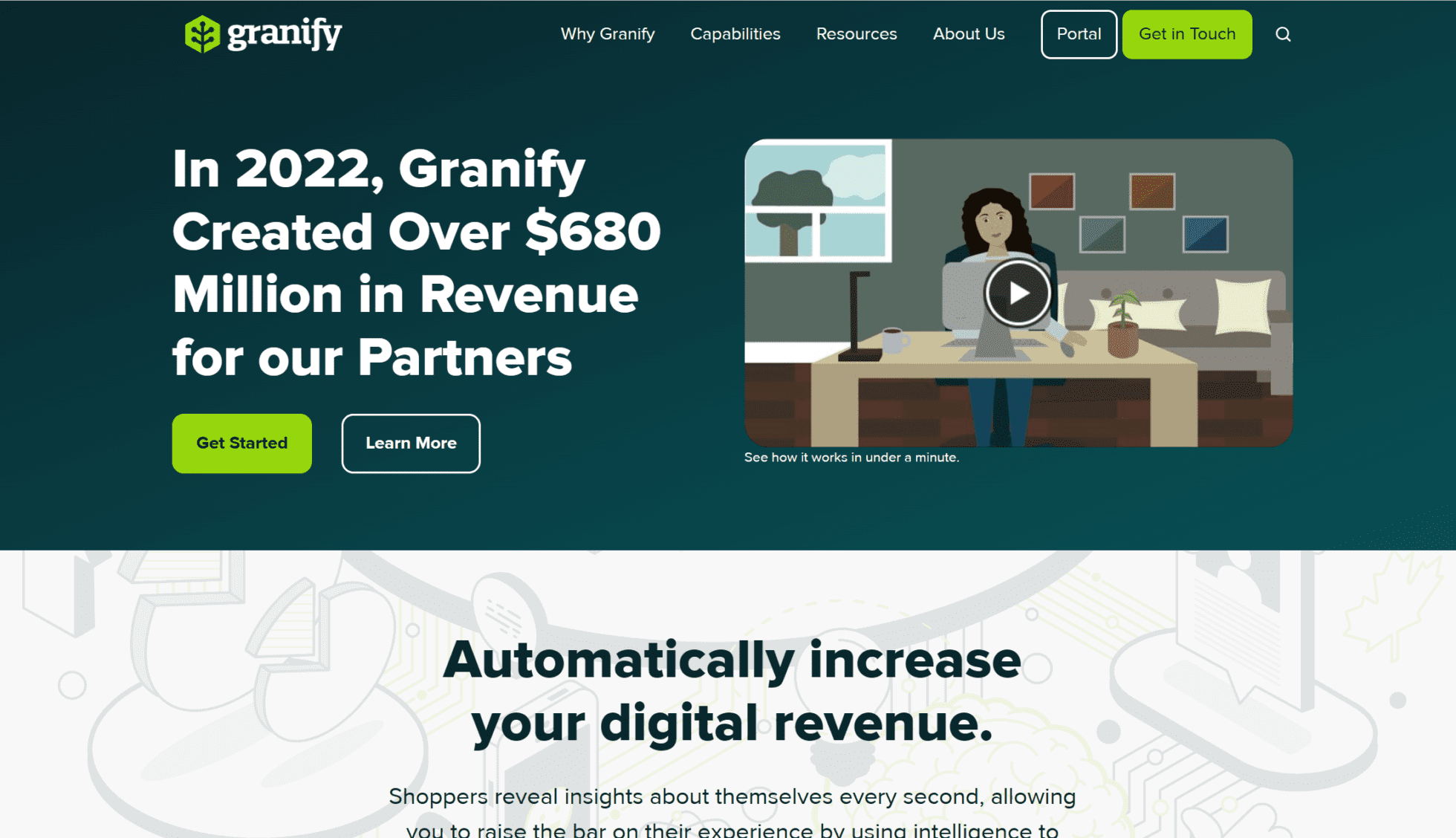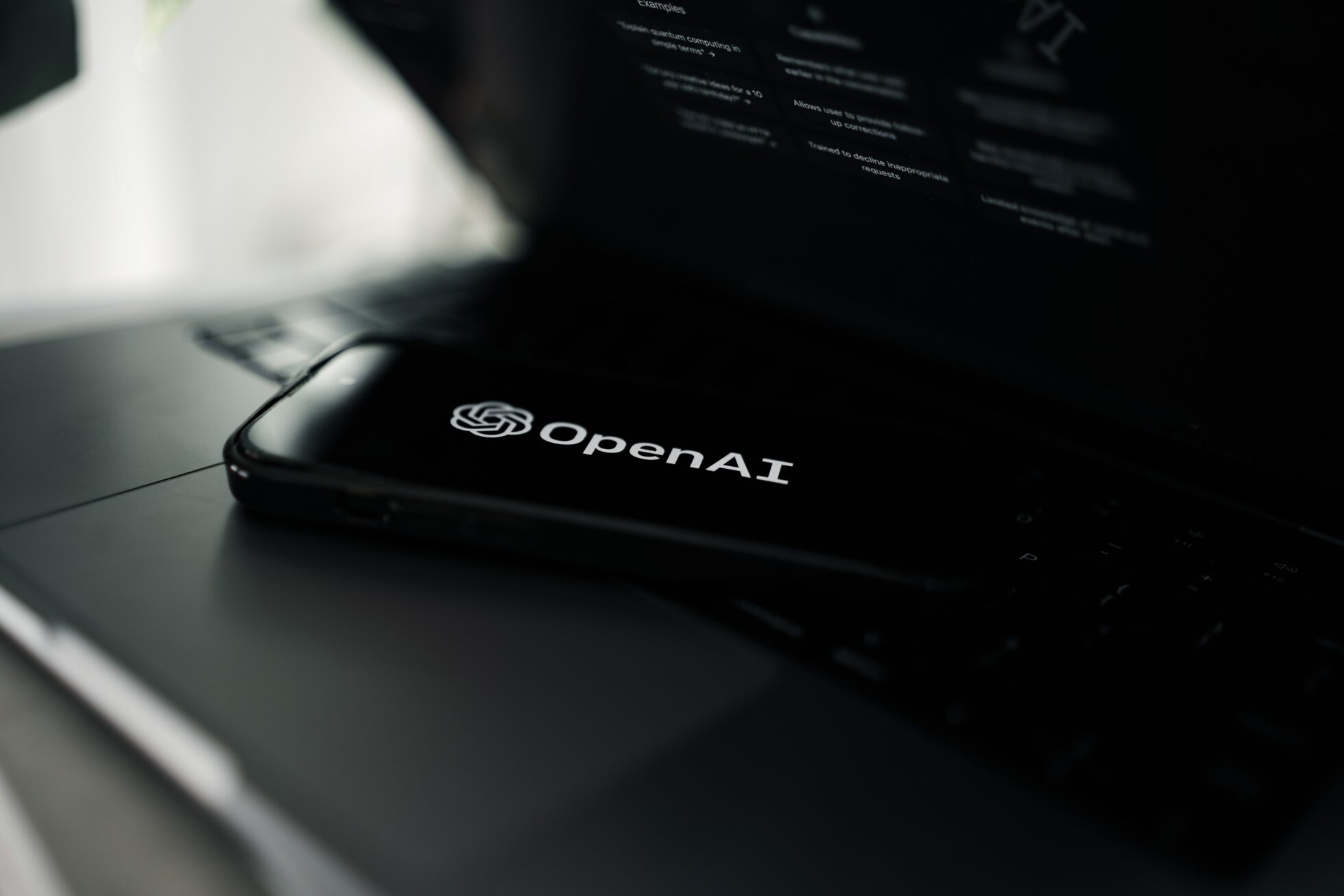ChatGPT has taken the world by storm. It’s the fastest-growing app of all time, and there’s little wonder as to why. It’s insane!
While everybody and his dog is jumping on the AI-train, there are specific areas where ChatGPT really shines. Product design is one of those areas. ChatGPT should not be used as a replacement for traditional user interviews and other UX research methods, but it can certainly complement them quite nicely.
There are definite limits to what ChatGPT is capable of, and it should never be used as a first measure in figuring out and finalizing business models, or setting roadmaps and strategies, but it can be used to support your product analysis, expansion of product lines, and a whole range of other amazing things that we’ll get onto shortly.
To put it simply, if you don’t jump on the AI train now, you’re going to be left waiting at the station while all your competitors head straight for Successville. That is if AI doesn’t become sentient, use all your data against you, and then hurl your train off a bridge. Tough call.

What is ChatGPT in a Nutshell?
In its most basic form, ChatGPT is a front-end for GPT. Most businesses will integrate with GPT to create their own front-ends with different names. tl;dv, for example, is an online meeting recorder that uses GPT to automate summaries, recognize speakers, and generate live transcripts, but it has nothing to do with ChatGPT.
What Does GPT Stand For?
GPT stands for Generative Pre-Training Transformer.
Still none the wiser? It basically means it’s an AI model that can generate text. It works by being trained on an enormous body of text so that it can learn to respond in a human-like manner.
As it’s trained in multiple languages, it can be a great tool for translation, but also for text generation and classification. It can analyze text well and can understand what you personally train it on. For example, if you feed it information about your business, it will be able to give you more specific advice.
What ChatGPT Isn’t
ChatGPT isn’t the be all and end all decision maker. It’s not so intelligent that it can replace humans just yet. Though it will revolutionize a lot of jobs, and it will probably be a desired skill to know how to ask ChatGPT the best questions to get the most comprehensive answers.
Having said that, Tom might have other ideas about what ChatGPT can and can’t do…
@tldv.io Written by ChatGPT #inception #chatgpt #ai #openai #meeting #corporate
♬ original sound - tldv.io - AI Meeting Recorder
Why is ChatGPT Relevant to Product Managers?
There are dozens of reasons why ChatGPT is relevant to product managers. As we mentioned earlier, you can program ChatGPT to understand your business or your requirements in more depth so that it can give you tailored answers. You can also shorten the prompt by comparing your business to a popular competitor. Not to mention, you can use GPT to generate summaries, highlight blindspots, and even write your emails for you. While ChatGPT is not perfect, it can automate, simplify, and scale your work process, maximizing your team’s output. You’ll have to reword what it says, and you’ll have to double check if it’s mentioning any statistics or other factual information, but it’s a fantastic tool to speed up the product management process, as well as user research. Not fully happy with ChatGPT’s answer? Feed it some adjectives to change its tone; be clear and obvious. If you want it to have a more humorous tone, tell it. If you want it to be more chatty, tell it. If you want it to be sarcastic, TELL IT. It all comes down to what prompts you give it. ChatGPT is only as good as the person asking it. Here are some of the best prompts for ChatGPT for product managers to keep in mind.AI Tools for Product Managers
Currently, you only have to throw a rock and you’d hit a product trying to jump on the AI wave. Most of them don’t need it as much as they think they do, but some really shine in an AI light. The AI meeting assistant is thankfully in the latter group. Product managers are using AI-powered meeting tools to save time and boost productivity in meetings. An AI meeting tool uses technology like GPT to transcribe, summarize, document and share important moments from product meetings or user research interviews. It will completely revolutionize product management. tl;dv is one such supporting tool that helps user researchers eliminate the time-consuming, burdensome, and ineffective parts of user research. That’s because AI powers the analysis and categorization of user insights, but tl;dv also has enough innovation to speed up the manual parts too. tl;dv’s AI can already record and transcribe meetings, and recognize the speakers so you can immediately find the moment you’re looking for in your user research meetings. On top of that, user researchers can label the important moments in real-time mid-call to cluster their insights accordingly. Next in the pipeline is an automation of that which allows a pre-defined tagging system. The AI will support you to cluster and consolidate your meeting insights as fast as possible, making it easy to accept or reject the suggestions by tl;dv’s AI, as well as improve it manually on top. The clusters can be used to generate highlight clips and reels to share your findings with your colleagues, or to export to Notion, Airtable, or whichever other UX research repository you’re using, in a table format for deeper synthesis of your clusters.
To put it simply, if you aren’t taking advantage of GPT-3, chances are you’ll be at a disadvantage to any competitors who ARE making use of this technology. And, judging by the sheer amount of ChatGPT use cases for product managers, that will be an increasing amount as the days go by…
So let’s take a look at how GPT can help product managers specifically, and what tools can you use to improve upon that even more.
10 Ways That Product Managers Use ChatGPT
1. Summarization
Product managers are making use of this fantastic tech to summarize raw findings quickly into a form of their choice. If you’ve got a whole bunch of information in the form of documentation or research, ChatGPT can boil it down to the essential take-aways.
To do this, you’ll need to first train the model with your customer intel. It needs to know what you’re working with before it can give any really useful advice or summaries. Then you can choose a model as a basis for its summary if you so desire. Basically, you’ll tell ChatGPT how you want the information summarized.
ChatGPT will then quickly and effectively summarize your findings so that you can save time that’s better spent elsewhere.
As always, you should double check the results, because ChatGPT isn’t perfect. It can and will make mistakes, so do your due diligence.
While you can use the ChatGPT interface to summarize your content, you can also opt for a more specialized AI like Genei. This powerful tool automatically summarizes background reading, documentation and research so you can produce blogs, articles, and reports faster.
2. Highlights Blind Spots
After completing the user research and reaching the analysis period, you can feed your insights to ChatGPT and ask it for a second pair of eyes. Often, ChatGPT will approach the topic from a different perspective, giving you fresh takes on your insights and highlighting blind spots and biases that you may not have noticed.
ChatGPT will increase coverage of your research, highlighting cost structures, revenue streams, or even partners to ensure you’ve got the most things covered.
AskViable is a great tool that promises to save you hundreds of hours analyzing feedback. It harnesses the power of GPT-3 to automate your qualitative data analysis, without compromising on quality. It will give comprehensive feedback on your user research to ensure that you miss as little as possible.
Of course, as with all things artificial intelligence. Don’t trust it 100%. Always do your own thorough tests and checks, but use AI to supplement manual labor.
3. Predictive Analytics

AI can help product managers customize different types of data to make predictions about product performance, customer behavior, and market trends. While powerful, this type of analytics is just using past data to predict future performance. There is no guarantee that what it says will be correct, especially in the case of a black swan event.
SAP Analytics Cloud is currently the best in the business for predictive analytics. It can even use customer data solutions to match potential customers with clients.
4. Outreach Emails
Want to speed up your email process? ChatGPT and other AI-powered software can write emails for you in the exact tone that matches your business. Sure, some of these will need to be adjusted a little bit, but it can certainly provide a top notch first draft for you to save time.
For product managers, GPT is a life savior when it comes to outreach emails for user interviews. You can give GPT incentives to include in the email, add all the relevant information about the offer, and set the tone of voice. It will provide a complete first draft in mere moments, then you just change what needs changing. Simple.

Introducing Writecream, an AI tool that will generate cold emails, sales pitches, blog articles, and everything else you want it to. Again, with GPT-powered text generation, you’ll always want to double check it to make sure the facts are correct, the tone is matched to your style, and the content is clear. Also, if you’re using AI to write SEO articles & blogs, you’ll be pleased to know that Google is not against AI generated content. .
Having said that, if you want a tool that can deliver drafts for emails in a fraction of the time it would take a human, then Writecream is the top choice right now. Sure, ChatGPT will have a decent go too if you offer it the right prompt, but Writecream’s GPT is specifically designed with marketing and sales content in mind.
5. Draft Survey Questions
One of the many great AI use cases for product managers outlined by Aatir Abdul Rauf in his epic LinkedIn post, drafting survey questions has never been easier. Simply feed ChatGPT the type of survey you want, the content you want it to cover, and voila! You have yourself a survey.
BlockSurvey allows you to generate surveys in seconds with AI. Its GPT-3 powered surveys make use of this fascinating tech specifically to help you get your surveys completed faster. Think how much time you could cut out of your work day if emails, surveys, and data summaries were all done instantly. This isn’t a thing of the future. This is happening right now, thanks to GPT.
6. Expand Product Lines
Another AI use case for product managers outlined by Rauf, ChatGPT will take your ideas, understand your motive to expand, and then provide several product lines that you could venture into within the same field or niche.
You can ask what adjacent products or services you can offer to leverage your strengths and capture more market share. Once you’ve fed it your current business, perhaps shortening the prompt with a competitor’s name, ChatGPT will give you a handful of ideas that you can use to get started.
As always, ChatGPT doesn’t do the work for you, but it provides a fantastic starting point for you to evaluate your progress. Imagine you’ve given an employee the task to come up with several ideas for expanding product lines. He’ll probably take a day or three to research potential avenues, then come back to present his findings in a board meeting. ChatGPT does this instantly, for free, and will probably cover more bases. It jump starts that board meeting so you can get straight into the decision making.
Once you’ve made your decision, after consulting with ChatGPT, you might need to create a new web app, or adjust your website. Gone are the days where hiring an expensive developer is a must. We now have AI tools like Debuild that will generate a new webpage for you using GPT.
The low-code tool helps you build web apps blazingly fast. Simply describe your app, pick your use cases, and away you go.

7. Customer Experience
AI can help product managers to analyze customer feedback, sentiment, and interactions to identify areas for improvement. This will mean product managers can optimize customer experience simply and swiftly.
SheetAI is a great example of a tool that utilizes GPT-3 to make a product manager’s life easier. With this nifty tool, you can use ChatGPT within Google Sheets to automate data analysis, as well as provide suggestions for taglines, subject lines, emails, and blogs. You can even use it to generate powerful images directly into your spreadsheet, instead of searching for hours for the right one.
8. Competition Monitoring
Product managers are a competitive bunch. They need to be in order to pump out the best products. Now, AI can assist product managers in monitoring competitors and their activities, identifying key trends in the market.
While everybody knows tools like Semrush, an SEO optimizer that also helps with competitor research, the ChatGPT wave has spawned even more specialized competitive intelligence tools.
VisualPing, for example, monitors website changes, so you don’t have to. It’s trusted by 85% of Fortune 500 companies, and sends alerts whenever a competitor makes a change to its website. It’s strikingly simple to use and allows you to track at scale so you never miss a beat.
9. Product Recommendations
Similar to expanding product lines, ChatGPT can help product managers to recommend products based on customer behavior and preferences. It will assist you in narrowing down your target audience.

Granify is a powerful tool that claims to automatically increase your digital revenue. How does it do such a thing, you might ask. Well, young padawan, I can tell you that it uses AI to optimize customer experiences for the biggest retailers in business. After quickly analyzing a customer’s complex accumulated intelligence, it will intelligently offer the right product at the right time to the right customer.
Granify will determine the optimal message and the perfect time to display it. Most importantly, it changes its method for each and every customer, giving them a unique experience that is completely and utterly tailored to them. This is the power of AI in product recommendations…
10. Product Development
AI can help product managers design, test, and optimally launch new products by analyzing data on customer needs, preferences and buying patterns. While you can use something like ChatGPT to get this information, there are better AI tools available that still use GPT-3 in the backend. Tools like ABTesting.ai, for example.
This powerhouse of a tool lets you optimize your landing pages for conversions using their A/B testing software. It only takes 10 minutes to set up, but once that’s done, you can let it work its magic in the background. You just have to relax and watch your conversions go up.
Bonus: Meeting Tools
After the pandemic, it’s common to work online. That means online meetings. Lots of them. With GPT-powered meeting tools, you can reduce your time in meetings, by letting AI do most of the work for you. It can attend on your behalf, make notes, summarize the action points of the meeting, record, transcribe, recognize who’s speaking, and create highlights, reels, clips. In fact, there’s not much it can’t do.
While you can’t invite ChatGPT to your meetings, you can use an AI meeting tool that implements GPT-3 in the backend, like tl;dv. Available on both Google Meet and Zoom, and completely free to use, tl;dv is a fantastic remote UX research tool that helps you summarize and analyze your user research with ease. Not only this, but the manual note-taking feature is super intuitive and excellent for timestamping key meeting moments. As much as we believe AI can help identify takeaways, it’s important to balance automated summaries with manual notes.
With tl;dv, you can search keywords transcripts to find all past meeting mentions of a specific feature, project, competitor or bug. You can then quickly make a highlight reel of all relevant conversations, and share this with a simple copy and paste into your research repository of choice, or even just on Slack.
Your stakeholders can easily jump to the important parts of your user interviews, hearing the voice of the customer explain problems in their own words, with their own emotions and expressions to go with it.
Optimize your user research, and make insight-backed product decisions with tl;dv.
The AI Revolution is Here
Are you on board? Because your competitors will be. As harsh as it sounds, if you don’t get onto the ChatGPT hype now, you’re gonna be left in the dust. The world changes, and to stay at the top, you have to change with it.















